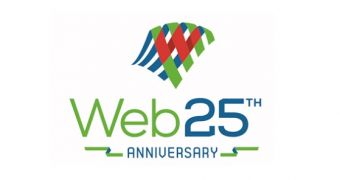Today, March 12, 2014, the World Wide Web celebrates its 25th anniversary. British computer scientists Sir Tim Berners-Lee, the man who came up with the idea of improving information flows, has taken the opportunity to share some thoughts and ask for the support of internauts in making the Web better.
The Internet has come a long way since 1989. Among the key Web milestones, there is the first smartphone (1992), the release of the WWW source code by CERN (1993), the first full text search engine (1994), Amazon, eBay and Internet Explorer (1995), Hotmail (1996), Google (1998), LinkedIn and Skype (2003), Facebook (2004), Twitter (2006), Android (2007), iTunes (2008) and the Bing search engine (2009).
But what do experts think about the evolution of the Web and where it’s headed?
Steve Orchard, SVP and general manager of data center and network services at Internap, has told Softpedia the following:
“As the Internet marks its silver anniversary, I'm sure Sir Tim Berners-Lee could not have anticipated 25 years ago that it would essentially shrink the world and permeate nearly every aspect of daily modern life.
However, as the Internet continues to surge in the number of users, connected devices and traffic worldwide, so has latency begun to increasingly loom over Internet performance as well as both enterprise success and consumer satisfaction.
The Internet was built to deliver traffic over the shortest route, rather than the fastest, most optimal route. While this method gets traffic where it needs to go, it isn’t optimized to meet the demands of modern users who expect information to be delivered to their fingertips in real time, on any device, anywhere in the world.
Technologies have evolved along with the Internet to meet these changing user demands, such as Internap’s Managed Internet Route Optimizer (MIRO), which acts as a sort of packet ‘satnav,’ scanning traffic across multiple Internet backbones to detect things like packet loss and jitter and making more than 15 million routing calibrations daily to deliver traffic over the fastest path and route around latency hotpots.
One thing is certain - today’s network technologies will continue to advance to keep pace with Internet usage, with endeavours such as Google’s Project Loon looking at increasingly unconventional ways to keep the planet connected.”
Sergio Galindo, general manager of the Infrastructure Business Unit at GFI Software, noted:
“While the web is 25 years old this week, it is in the last five years that we’ve seen the most prolific expansion of web-based content. Such an explosion of material and adoption has created many challenges – as well as opportunities – as users try to make sense of all the information now at their fingertips.
The arrival of the first full text search engine in 1994 simplified the process, but at the same time made it even easier to access problematic, malware-infected, illegal and offensive content in equal measure.
One of the biggest challenges facing end users, as well as employers, ISPs and even search engines, is how to filter content appropriately (if at all), so that the less salubrious sites and services are screened out for and by users and organisations that want to limit access to the darker corners of the net, be it for IT security, legal, moral or simply personal preference reasons.
The process is further complicated by the explosion of internet-enabled mobile devices that now form the basis for today’s Internet generation.
Managing the web is by far the most contentious subject that has emerged during the last quarter century. While governments, lobbyists, ISPs and other parties argue for and against censoring, one thing is clear: wholesale web censorship at source is an inflexible and inefficient approach to information management that will never be 100% accurate and will be extremely difficult to reverse when sites are inaccurately censored.
Web filtering at the point of request can offer the same ability to limit access for some who want and need it, but with faster implementation and reversal, all without imposing the same restrictions on everyone outside of one organisation or group.
The biggest legacy of the web’s first 25 years is the unrelenting freedom of information. Limiting the young, vulnerable and other unsuitable users from accessing material that could offend or cause legal issues for employers makes perfect sense, but it is a content control that should be applied locally, rather than be a broad-spectrum censorship layer that could stifle the next 25 years of web innovation.”

 14 DAY TRIAL //
14 DAY TRIAL //